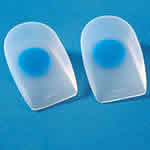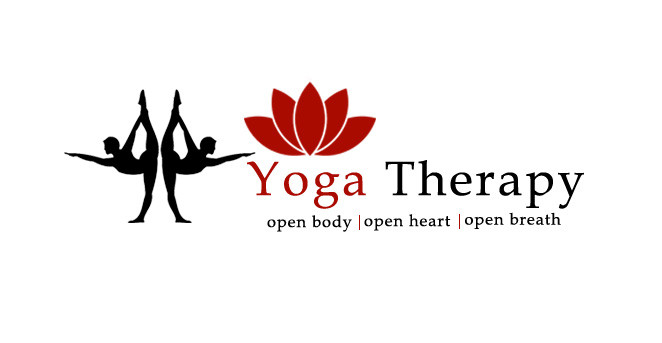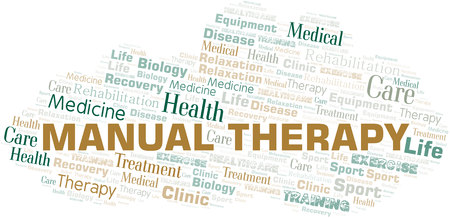
Student Excellence Certifications 3rd Year BPT

Description
Course content
Bachelor of Physiotherapy (BPT) 3RD Year
BIOMECHANICS AND KINESIOLOGY
Min. Hrs: Theory- 80 Hrs.,
THEORY
1. Mechanics - Definition of mechanics and Biomechanics
2. Motion: definition, types of motion, plane and axis of motion, factor determining
the kind and modification of motion.
3. Force - Definition, diagrammatic representation of force, point of application,
classification of forces, concurrent, coplanar and co-linear forces, composition and
resolution of forces, angle of pulls of muscle
4. Friction
5. Gravity - Definition, line of gravity, Centre of gravity
6. Equilibrium - Supporting base, types, and equilibrium in static and dynamic state
7. Levers - Definition, function, classification and application of levers in
physiotherapy & order of levers with example of lever in human body
8. Pulleys - system of pulleys, types and application
9. Elasticity - Definition, stress, strain, HOOKE’S Law
10. Springs - properties of springs, springs in series and parallel, elastic materials in use
11. Muscular system
12. Definition, properties of muscle, muscular contraction, structural classification,
action of muscle in moving bone, direction of pull, angle of pull, functional
classification, coordination of muscular system.
13. Joint structures and functions
14. Posture – dynamic and static posture, kinetic and kinematics of posture, analysis of
posture, effect of age, pregnancy, occupation on posture.
15. Gait – kinematics and kinetics of gait, gait in running and stair climbing.
PRACTICAL
1. Goniometry – measurement of joint ROM
2. Identify Muscle work of various movements in body at different angle.
3. Identify normal and abnormal posture.
4. Normal gait with it parameters and identify abnormal gait with the problems in it.
ORTHOP AEDICS
Min. Hrs. : 80 Hrs
1. Introduction to Orthopaedics:
An Orthopaedic patient, history taking, clinical features, clinical examination, and investigation (X- ray, CT scans, MRI scan, Bone scan)
2. Injuries of muscle & tendons : etiology & management.
3. Bony & Soft tissue injuries :
Injury & repair, Clinical presentation, evaluation & general principles of
rehabilitation management, Tenosynovitis, Bursitis etc.
4. Fractures -
a. Types, Healing, complications, general principles of treatment.
b. Fracture of Spine, pelvis, hip joint, femur, patella, knee joint, cartilage and ligaments, tibia, fibula, ankle, calcaneum, metatarsals, calvicle, scapula, ribs,
humerus, elbow joint, radius, ulna, scaphoid, metacarpals & phalanges. c. Fracture separation of epiphysis.
5. Inflammation of bones & joints (Clinical features, evaluation, conservative & surgical management) -
a) Bones - Osteomyelitis- osteomyelitis - pyogenic & tubercular, osteoarthritis.
b) Joints - Rheumatoid arthritis, Juvenile Arthritis, Reiter’s disease, Polymyalgia
rheumatica, Gout, Ankylosing spondylitis, Neuropathic- joints, haemophilic
arthropathy, Avascular necrosis.
6. Nutritional & metabolic diseases of bones : Rickets, Osteomalacia & Osteoporosis.
7. Spine deformities:
Clinical features, diagnosis, management of Scoliosis, Kyphosis, Lordosis, Spondylosis, prolapse of intervertebral disc, cord compression, sacralization and traumatic deformities (paraplegia & quadriplegia).
8. Infections of Musculoskeletal system -
9. Congenital malformations (in brief description with outline of treatment):
10. Developmental diseases of skeleton:
11. Neuromuscular diseases:
12. Upper Limbs
13. Lower Limb
14. Neuro-vascular Diseases
15. Amputations
16. Bone tumors : benign & malignant (in brief)
17. Operations :
18. Othopaedic splints and appliances.
19. Tractions
20. Foot arches & their complications.
21. Rehabilitation of patients.
PHYSIOTHERAPY IN ORTHOPEADIC CONDITIONS
Minimum Hours: Theory-60 Hrs., Practical-80 Hrs.
1. PT assessment for Orthopedic conditions -
SOAP format. Subjective - history taking, informed consent, personal, past, medical and socioeconomic history, chief complaints, history of present illness. Pain assessment- intensity, character, aggravating and relieving factors, site and location. Objective- on observation - body built swelling, muscle atrophy, deformities, posture and gait. On palpation- tenderness-grades, muscle spasm, swelling-methods of swelling assessment, bony prominences, soft tissue texture and integrity, warmth and vasomotor disturbances. On examination – ROM – active and passive, resisted isometric tests, limb length-apparent, true and segmental, girth measurement, muscle length testing-tightness, Contracture and flexibility, manual muscle testing, peripheral neurological examination dermatomes, myotomes and reflexes, special tests and functional tests. Prescription of home program. Documentation of case records, and follows up.
2. Fractures -
types, classification, signs and symptoms, complications. Fracture healing – factors affecting fracture healing. Principles of fracture management - reduction - open and closed, immobilization - sling, cast, brace, slab, traction - manual, mechanical, skin, skeletal, lumbar and Cervical traction, external fixation, functional cast bracing. PT management in complications - early and late - shock, compartmental syndrome, VIC, fat embolism, delayed and mal union, RSD, myositis ossificans, AVN, pressure sores etc. Physiotherapy assessment in fracture
cases. Aims of PT management in fracture cases - short and long term goals. Principles of PT management in fractures - Guidelines for fracture treatment during period of immobilization and guidelines for treatment after immobilization period.
3. Specific fractures and dislocations:
PT assessment and management of upper limb fractures and dislocations. PT assessment and management of lower limb fractures and dislocations including pelvis. PT assessment and management spinal fractures.
4. Principles of various schools of thought in manual therapy – Maitland, Mackenzie, Mulligan
5. Degenerative and inflammatory conditions:
Definition, signs and symptoms, clinical features, path physiology, radiological features, deformities, medical, surgical management. Describe the PT assessment and management and home program for the following conditions – Osteoarthritis - emphasis mainly on knee, hip and hand, Rheumatoid Arthritis, Ankylosing spondylitis, Gout, Perthes disease, Periarthritic shoulder.
6. Infective conditions:
Definition, signs and symptoms, clinical features, pathophysiology, radiological features, medical, surgical management. Describe PT assessment and management for following conditions – Osteomyelitis – acute and chronic, Septic arthritis, Pyogenic arthritis, TB spine and major joints - knee and hip.
7. Define; review the postural abnormalities of spinal column, clinical features, deformities, medical and surgical management. Describe PT assessment and management and home program.
8. Deformities:
Review in detail the causes, signs and symptoms, radiological features, medical and surgical management. Describe the PT. assessment and management of the following conditions : Congenital : CTEV, CDH, Torticollis, pes planus, pes cavus and other common deformities. Acquired: scoliosis, kyphosis, coxa vera, genu varum, valgum and recurvatum.
9. Poliomyelitis:
Definition, etiology, types, pathophysiology, clinical features, deformities, medical and surgical management. PT. assessment and management after surgical corrections and reconstructive surgeries - emphasis on tendon transfer and home program.
10. Leprosy:
Definition, cause, clinical features, medical and surgical management. PT assessment, aims, and management after surgical procedures such as tendon transfer both pre and post operatively.
11. Amputations:
Definition, levels, indications, types, PT assessment, aims, management pre and post operatively. PT management with emphasis on stump care and bandaging. Pre and post prosthetic training, checking out prosthesis, complications of amputations and its management.
12. Spinal conditions:
Review the causes, signs and symptoms, investigations, radiological features, neurological signs. PT assessment, aims, and management and home program of the following conditions: Cervical spondylosis, Lumbar spondylosis, Spondylolisthesis, Spinal canal stenosis, Spondylolysis, Sacro-iliac joint dysfunction, Sacralisation, Lumbarisation, Intervertebral disc prolapse, Coccydynia, Spina bifida occulta.
13. Osteoporosis : Causes, predisposing factors, investigations and treatment.
14. Orthopedic surgeries:
Pre and post operative PT assessment, goals, precautions and PT management of following surgeries such as: Arthrodesis, Osteotomy, Arthroplasty-partial and total- Excision arthroplasty, excision arthroplasty with implant, interpositional arthroplasty and total replacement; Tendon transplant, Soft tissue release- tenotomy, myotomy, lengthening; Arthroscopy, Spinal stabilization, Re- attachment of limbs, External fixators, Synovectomy.
15. Shoulder joint:
Shoulder instabilities, TOS, RSD, Impingement syndrome – conservative and Post operative PT management. Total shoulder replacement and Hemi replacement. - Post operative PT management. AC joint injuries - rehabilitation. Rotator cuff tears- conservative and surgical repair. Subacromial decompression - Post operative PT management.
16. Elbow and forearm:
Excision of radial head - Post operative PT management. Total elbow arthroplasty- Post operative PT management.
18. Wrist and Hand:
Total wrist arthroplasty. Repair of ruptured extensor tendons. Carpal tunnel syndrome. Flexor and extensor tendon lacerations - Post operative PT management.
19. Hip:
Joint surgeries- hemi and total hip replacement - Post operative PT management Tendonitis and bursitis. - Management.
20. Knee:
Lateral retinacular release, chondroplasty- Post operative management. Realignment of extensor mechanism. ACL and PCL reconstruction surgeries - Post operative rehabilitation. Meniscectomy and meniscal repair - Post operative management. Plica syndrome, patellar dysfunction and Hoffa's syndrome - conservative management. TKR- rehabilitation protocol. Patellar tendon ruptures and Patellectomy- rehabilitation.
21. Ankle and foot: Ankle instability. Ligamentous tears- Post operative management.
PRACTICALS
1. Practical demonstration of basic principles of physiotherapy assessment, functional assessment and application of physiotherapy in orthopeadics conditions.
2. Student must maintain a logbook. The duly completed logbook should be submitted during practical examination.
PHYSIOTHERAPY IN NEUROLOGICAL CONDITIONS
Minimum Hours: Theory-60 Hrs., Practical-80 Hrs.
THEORY
1) Review of basic Neuro - Anatomy and Physiology
2) Physiotherapy evaluation of a neurological patient, electro diagnostic procedures,
interpretations and prognosis in different neurological conditions, Upper and Lower
motor neuron lesions.
3) Principles of physiotherapy programs, reeducation and retraining techniques in
neurological conditions, approaches like: Bobath’s / neuro developmental therapy, Rood’s approach, PNF, Vojta techniques, biofeedback, Brunnstorm movement therapy, Motor Relearning programming, sensory integration therapy.
4) Disturbance of speech and aphasia
5) Spinal cord injury:
review of anatomy and physiology, Physiotherapy Assessment of Spinal cord injury, Principles of Physiotherapy at various stages of Spinal cord injury Rehabilitation goals and ADL training
6) Assessment and principles of therapeutic management of following neurological conditions:
• Stroke, meningitis, encephalitis, Parkinson’s disease, Cerebral palsy, cerebellar lesions, Brain tumors, Multiple Sclerosis, facial palsy.
• Motor neuron disease, Disseminated sclerosis, transverse myelitis, polio, syringomyelia, spina bifida,
• Neuropathies, neuromuscular junction disorders and myopathies
7) Peripheral nerve injuries, surgical resection & repair:
• Classification & types
• Functional assessment, investigation, diagnosis & prognosis
• Physiotherapeutic management
• Poly neuropathy
8) Traumatic brain injury:
• Types and Mechanisms of head injury
• Clinical features, potential complications
• Physiotherapy principles of immediate and postoperative therapeutic
management
9) Neurosurgery:
Post surgical Physical therapy in neurosurgical procedures – craniotomy, shunts, SOL resection, surgical treatment of spasticity, cervical cord decompression.
PRACTICAL
1. Practical demonstration of basic principles of physiotherapy assessment, functional assessment and application of physiotherapy in neurology conditions.
2. Student must maintain a logbook. The duly completed logbook should be submitted during practical examination.
Teaching, structure and assessment
This course runs through one year and is delivered through a combination of Online,face-to-face lectures, workshops and seminars. There’ll also be online learning tests which you’ll need to complete.
Learning Outcomes:
Student Excellence Certification Course BPT-3RD YEAR.
On successful completion of the course students will be able to:
Demonstrate sufficient understanding of knowledge in Physiotherapy.
· Able to integrate theoretical knowledge with clinical assessment.
· Develop the ability to collect history, perform relevant clinical assessment and frame
appropriate electrotherapeutic and exercise therapy management for the patients.
· Demonstrate clinical decision making ability and provide appropriate patient care.
· Develop effective communication with patients, family, colleagues and students
Bachelor of Physiotherapy (BPT) 3RD Year
BIOMECHANICS AND KINESIOLOGY
Min. Hrs: Theory- 80 Hrs.,
THEORY
1. Mechanics - Definition of mechanics and Biomechanics
2. Motion: definition, types of motion, plane and axis of motion, factor determining
the kind and modification of motion.
3. Force - Definition, diagrammatic representation of force, point of application,
classification of forces, concurrent, coplanar and co-linear forces, composition and
resolution of forces, angle of pulls of muscle
4. Friction
5. Gravity - Definition, line of gravity, Centre of gravity
6. Equilibrium - Supporting base, types, and equilibrium in static and dynamic state
7. Levers - Definition, function, classification and application of levers in
physiotherapy & order of levers with example of lever in human body
8. Pulleys - system of pulleys, types and application
9. Elasticity - Definition, stress, strain, HOOKE’S Law
10. Springs - properties of springs, springs in series and parallel, elastic materials in use
11. Muscular system
12. Definition, properties of muscle, muscular contraction, structural classification,
action of muscle in moving bone, direction of pull, angle of pull, functional
classification, coordination of muscular system.
13. Joint structures and functions
14. Posture – dynamic and static posture, kinetic and kinematics of posture, analysis of
posture, effect of age, pregnancy, occupation on posture.
15. Gait – kinematics and kinetics of gait, gait in running and stair climbing.
PRACTICAL
1. Goniometry – measurement of joint ROM
2. Identify Muscle work of various movements in body at different angle.
3. Identify normal and abnormal posture.
4. Normal gait with it parameters and identify abnormal gait with the problems in it.
ORTHOP AEDICS
Min. Hrs. : 80 Hrs
1. Introduction to Orthopaedics:
An Orthopaedic patient, history taking, clinical features, clinical examination, and investigation (X- ray, CT scans, MRI scan, Bone scan)
2. Injuries of muscle & tendons : etiology & management.
3. Bony & Soft tissue injuries :
Injury & repair, Clinical presentation, evaluation & general principles of
rehabilitation management, Tenosynovitis, Bursitis etc.
4. Fractures -
a. Types, Healing, complications, general principles of treatment.
b. Fracture of Spine, pelvis, hip joint, femur, patella, knee joint, cartilage and ligaments, tibia, fibula, ankle, calcaneum, metatarsals, calvicle, scapula, ribs,
humerus, elbow joint, radius, ulna, scaphoid, metacarpals & phalanges. c. Fracture separation of epiphysis.
5. Inflammation of bones & joints (Clinical features, evaluation, conservative & surgical management) -
a) Bones - Osteomyelitis- osteomyelitis - pyogenic & tubercular, osteoarthritis.
b) Joints - Rheumatoid arthritis, Juvenile Arthritis, Reiter’s disease, Polymyalgia
rheumatica, Gout, Ankylosing spondylitis, Neuropathic- joints, haemophilic
arthropathy, Avascular necrosis.
6. Nutritional & metabolic diseases of bones : Rickets, Osteomalacia & Osteoporosis.
7. Spine deformities:
Clinical features, diagnosis, management of Scoliosis, Kyphosis, Lordosis, Spondylosis, prolapse of intervertebral disc, cord compression, sacralization and traumatic deformities (paraplegia & quadriplegia).
8. Infections of Musculoskeletal system -
9. Congenital malformations (in brief description with outline of treatment):
10. Developmental diseases of skeleton:
11. Neuromuscular diseases:
12. Upper Limbs
13. Lower Limb
14. Neuro-vascular Diseases
15. Amputations
16. Bone tumors : benign & malignant (in brief)
17. Operations :
18. Othopaedic splints and appliances.
19. Tractions
20. Foot arches & their complications.
21. Rehabilitation of patients.
PHYSIOTHERAPY IN ORTHOPEADIC CONDITIONS
Minimum Hours: Theory-60 Hrs., Practical-80 Hrs.
1. PT assessment for Orthopedic conditions -
SOAP format. Subjective - history taking, informed consent, personal, past, medical and socioeconomic history, chief complaints, history of present illness. Pain assessment- intensity, character, aggravating and relieving factors, site and location. Objective- on observation - body built swelling, muscle atrophy, deformities, posture and gait. On palpation- tenderness-grades, muscle spasm, swelling-methods of swelling assessment, bony prominences, soft tissue texture and integrity, warmth and vasomotor disturbances. On examination – ROM – active and passive, resisted isometric tests, limb length-apparent, true and segmental, girth measurement, muscle length testing-tightness, Contracture and flexibility, manual muscle testing, peripheral neurological examination dermatomes, myotomes and reflexes, special tests and functional tests. Prescription of home program. Documentation of case records, and follows up.
2. Fractures -
types, classification, signs and symptoms, complications. Fracture healing – factors affecting fracture healing. Principles of fracture management - reduction - open and closed, immobilization - sling, cast, brace, slab, traction - manual, mechanical, skin, skeletal, lumbar and Cervical traction, external fixation, functional cast bracing. PT management in complications - early and late - shock, compartmental syndrome, VIC, fat embolism, delayed and mal union, RSD, myositis ossificans, AVN, pressure sores etc. Physiotherapy assessment in fracture
cases. Aims of PT management in fracture cases - short and long term goals. Principles of PT management in fractures - Guidelines for fracture treatment during period of immobilization and guidelines for treatment after immobilization period.
3. Specific fractures and dislocations:
PT assessment and management of upper limb fractures and dislocations. PT assessment and management of lower limb fractures and dislocations including pelvis. PT assessment and management spinal fractures.
4. Principles of various schools of thought in manual therapy – Maitland, Mackenzie, Mulligan
5. Degenerative and inflammatory conditions:
Definition, signs and symptoms, clinical features, path physiology, radiological features, deformities, medical, surgical management. Describe the PT assessment and management and home program for the following conditions – Osteoarthritis - emphasis mainly on knee, hip and hand, Rheumatoid Arthritis, Ankylosing spondylitis, Gout, Perthes disease, Periarthritic shoulder.
6. Infective conditions:
Definition, signs and symptoms, clinical features, pathophysiology, radiological features, medical, surgical management. Describe PT assessment and management for following conditions – Osteomyelitis – acute and chronic, Septic arthritis, Pyogenic arthritis, TB spine and major joints - knee and hip.
7. Define; review the postural abnormalities of spinal column, clinical features, deformities, medical and surgical management. Describe PT assessment and management and home program.
8. Deformities:
Review in detail the causes, signs and symptoms, radiological features, medical and surgical management. Describe the PT. assessment and management of the following conditions : Congenital : CTEV, CDH, Torticollis, pes planus, pes cavus and other common deformities. Acquired: scoliosis, kyphosis, coxa vera, genu varum, valgum and recurvatum.
9. Poliomyelitis:
Definition, etiology, types, pathophysiology, clinical features, deformities, medical and surgical management. PT. assessment and management after surgical corrections and reconstructive surgeries - emphasis on tendon transfer and home program.
10. Leprosy:
Definition, cause, clinical features, medical and surgical management. PT assessment, aims, and management after surgical procedures such as tendon transfer both pre and post operatively.
11. Amputations:
Definition, levels, indications, types, PT assessment, aims, management pre and post operatively. PT management with emphasis on stump care and bandaging. Pre and post prosthetic training, checking out prosthesis, complications of amputations and its management.
12. Spinal conditions:
Review the causes, signs and symptoms, investigations, radiological features, neurological signs. PT assessment, aims, and management and home program of the following conditions: Cervical spondylosis, Lumbar spondylosis, Spondylolisthesis, Spinal canal stenosis, Spondylolysis, Sacro-iliac joint dysfunction, Sacralisation, Lumbarisation, Intervertebral disc prolapse, Coccydynia, Spina bifida occulta.
13. Osteoporosis : Causes, predisposing factors, investigations and treatment.
14. Orthopedic surgeries:
Pre and post operative PT assessment, goals, precautions and PT management of following surgeries such as: Arthrodesis, Osteotomy, Arthroplasty-partial and total- Excision arthroplasty, excision arthroplasty with implant, interpositional arthroplasty and total replacement; Tendon transplant, Soft tissue release- tenotomy, myotomy, lengthening; Arthroscopy, Spinal stabilization, Re- attachment of limbs, External fixators, Synovectomy.
15. Shoulder joint:
Shoulder instabilities, TOS, RSD, Impingement syndrome – conservative and Post operative PT management. Total shoulder replacement and Hemi replacement. - Post operative PT management. AC joint injuries - rehabilitation. Rotator cuff tears- conservative and surgical repair. Subacromial decompression - Post operative PT management.
16. Elbow and forearm:
Excision of radial head - Post operative PT management. Total elbow arthroplasty- Post operative PT management.
18. Wrist and Hand:
Total wrist arthroplasty. Repair of ruptured extensor tendons. Carpal tunnel syndrome. Flexor and extensor tendon lacerations - Post operative PT management.
19. Hip:
Joint surgeries- hemi and total hip replacement - Post operative PT management Tendonitis and bursitis. - Management.
20. Knee:
Lateral retinacular release, chondroplasty- Post operative management. Realignment of extensor mechanism. ACL and PCL reconstruction surgeries - Post operative rehabilitation. Meniscectomy and meniscal repair - Post operative management. Plica syndrome, patellar dysfunction and Hoffa's syndrome - conservative management. TKR- rehabilitation protocol. Patellar tendon ruptures and Patellectomy- rehabilitation.
21. Ankle and foot: Ankle instability. Ligamentous tears- Post operative management.
PRACTICALS
1. Practical demonstration of basic principles of physiotherapy assessment, functional assessment and application of physiotherapy in orthopeadics conditions.
2. Student must maintain a logbook. The duly completed logbook should be submitted during practical examination.
PHYSIOTHERAPY IN NEUROLOGICAL CONDITIONS
Minimum Hours: Theory-60 Hrs., Practical-80 Hrs.
THEORY
1) Review of basic Neuro - Anatomy and Physiology
2) Physiotherapy evaluation of a neurological patient, electro diagnostic procedures,
interpretations and prognosis in different neurological conditions, Upper and Lower
motor neuron lesions.
3) Principles of physiotherapy programs, reeducation and retraining techniques in
neurological conditions, approaches like: Bobath’s / neuro developmental therapy, Rood’s approach, PNF, Vojta techniques, biofeedback, Brunnstorm movement therapy, Motor Relearning programming, sensory integration therapy.
4) Disturbance of speech and aphasia
5) Spinal cord injury:
review of anatomy and physiology, Physiotherapy Assessment of Spinal cord injury, Principles of Physiotherapy at various stages of Spinal cord injury Rehabilitation goals and ADL training
6) Assessment and principles of therapeutic management of following neurological conditions:
• Stroke, meningitis, encephalitis, Parkinson’s disease, Cerebral palsy, cerebellar lesions, Brain tumors, Multiple Sclerosis, facial palsy.
• Motor neuron disease, Disseminated sclerosis, transverse myelitis, polio, syringomyelia, spina bifida,
• Neuropathies, neuromuscular junction disorders and myopathies
7) Peripheral nerve injuries, surgical resection & repair:
• Classification & types
• Functional assessment, investigation, diagnosis & prognosis
• Physiotherapeutic management
• Poly neuropathy
8) Traumatic brain injury:
• Types and Mechanisms of head injury
• Clinical features, potential complications
• Physiotherapy principles of immediate and postoperative therapeutic
management
9) Neurosurgery:
Post surgical Physical therapy in neurosurgical procedures – craniotomy, shunts, SOL resection, surgical treatment of spasticity, cervical cord decompression.
PRACTICAL
1. Practical demonstration of basic principles of physiotherapy assessment, functional assessment and application of physiotherapy in neurology conditions.
2. Student must maintain a logbook. The duly completed logbook should be submitted during practical examination.
Teaching, structure and assessment
This course runs through one year and is delivered through a combination of Online,face-to-face lectures, workshops and seminars. There’ll also be online learning tests which you’ll need to complete.
Learning Outcomes:
Student Excellence Certification Course BPT-3RD YEAR.
On successful completion of the course students will be able to:
Demonstrate sufficient understanding of knowledge in Physiotherapy.
· Able to integrate theoretical knowledge with clinical assessment.
· Develop the ability to collect history, perform relevant clinical assessment and frame
appropriate electrotherapeutic and exercise therapy management for the patients.
· Demonstrate clinical decision making ability and provide appropriate patient care.
· Develop effective communication with patients, family, colleagues and students
Product rating
Customer Reviews
There have been no reviews for this product.
Add your review here



![CCDR K-TAPE Imported [TM] CCDR K-TAPE Imported [TM]](http://www.ccdr.co.in/images/T/kinesio6.jpg)
![6 DAYS COURSE ON CERTIFICATE IN ORTHOPAEDIC MANUAL THERAPY [COMT] - AHMEDABAD 6 DAYS COURSE ON CERTIFICATE IN ORTHOPAEDIC MANUAL THERAPY [COMT] - AHMEDABAD](http://www.ccdr.co.in/images/T/manual%20therapy%20side.jpg)
![6 DAYS COURSE ON CERTIFICATE IN ORTHOPAEDIC MANUAL THERAPY [COMT] - HYDERABAD 6 DAYS COURSE ON CERTIFICATE IN ORTHOPAEDIC MANUAL THERAPY [COMT] - HYDERABAD](http://www.ccdr.co.in/images/T/manual%20therapy%20side-04.jpg)















